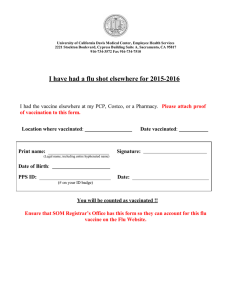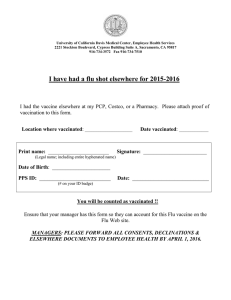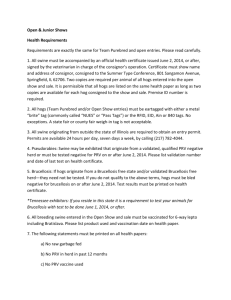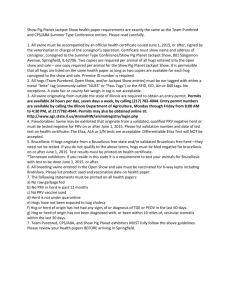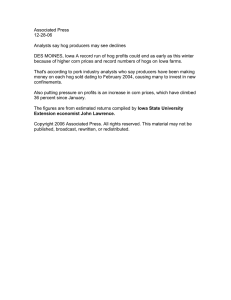Kansas State Agricultural College Field Tests with Experimental EXPERIMENT STATION
advertisement
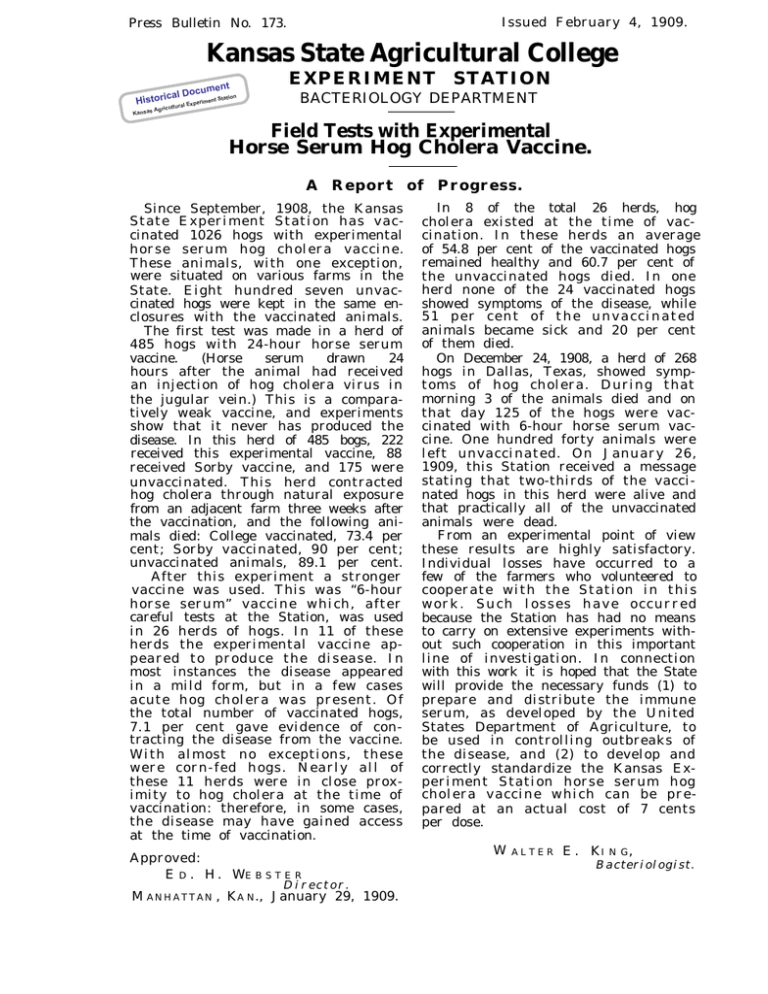
Issued February 4, 1909. Press Bulletin No. 173. Kansas State Agricultural College t cumen n io cal Do Histori tural Experiment Stat EXPERIMENT STATION BACTERIOLOGY DEPARTMENT ul Agric Kansas Field Tests with Experimental Horse Serum Hog Cholera Vaccine. A Report Since September, 1908, the Kansas State Experiment Station has vaccinated 1026 hogs with experimental horse serum hog cholera vaccine. These animals, with one exception, were situated on various farms in the State. Eight hundred seven unvaccinated hogs were kept in the same enclosures with the vaccinated animals. The first test was made in a herd of 485 hogs with 24-hour horse serum vaccine. (Horse serum drawn 24 hours after the animal had received an injection of hog cholera virus in the jugular vein.) This is a comparatively weak vaccine, and experiments show that it never has produced the disease. In this herd of 485 bogs, 222 received this experimental vaccine, 88 received Sorby vaccine, and 175 were unvaccinated. This herd contracted hog cholera through natural exposure from an adjacent farm three weeks after the vaccination, and the following animals died: College vaccinated, 73.4 per cent; Sorby vaccinated, 90 per cent; unvaccinated animals, 89.1 per cent. After this experiment a stronger vaccine was used. This was “6-hour horse serum” vaccine which, after careful tests at the Station, was used in 26 herds of hogs. In 11 of these herds the experimental vaccine appeared to produce the disease. In most instances the disease appeared in a mild form, but in a few cases acute hog cholera was present. Of the total number of vaccinated hogs, 7.1 per cent gave evidence of contracting the disease from the vaccine. With almost no exceptions, these were corn-fed hogs. Nearly all of these 11 herds were in close proximity to hog cholera at the time of vaccination: therefore, in some cases, the disease may have gained access at the time of vaccination. Approved: E D . H . WE B S T E R Director. M A N H A T T A N , KA N., January 29, 1909. of Progress. In 8 of the total 26 herds, hog cholera existed at the time of vaccination. In these herds an average of 54.8 per cent of the vaccinated hogs remained healthy and 60.7 per cent of the unvaccinated hogs died. In one herd none of the 24 vaccinated hogs showed symptoms of the disease, while 51 per cent of the unvaccinated animals became sick and 20 per cent of them died. On December 24, 1908, a herd of 268 hogs in Dallas, Texas, showed symptoms of hog cholera. During that morning 3 of the animals died and on that day 125 of the hogs were vaccinated with 6-hour horse serum vaccine. One hundred forty animals were left unvaccinated. On January 26, 1909, this Station received a message stating that two-thirds of the vaccinated hogs in this herd were alive and that practically all of the unvaccinated animals were dead. From an experimental point of view these results are highly satisfactory. Individual losses have occurred to a few of the farmers who volunteered to cooperate with the Station in this work. Such losses have occurred because the Station has had no means to carry on extensive experiments without such cooperation in this important line of investigation. In connection with this work it is hoped that the State will provide the necessary funds (1) to prepare and distribute the immune serum, as developed by the United States Department of Agriculture, to be used in controlling outbreaks of the disease, and (2) to develop and correctly standardize the Kansas Experiment Station horse serum hog cholera vaccine which can be prepared at an actual cost of 7 cents per dose. W ALTER E . KI N G, Bacteriologist.
